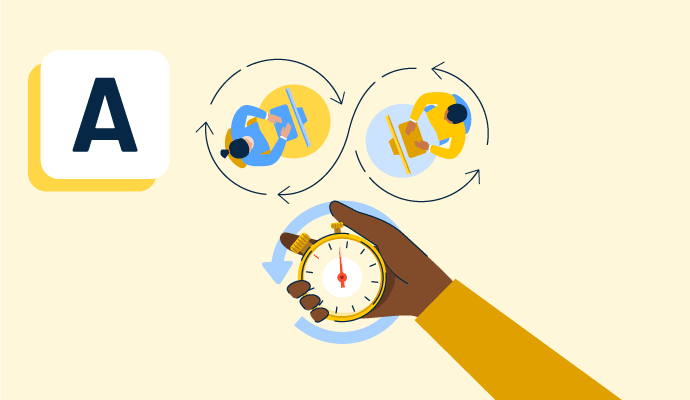Agile is a collaborative project management approach that uses values and principles from the Agile Manifesto. Scrum is an agile framework that facilitates projects. The main difference is that agile focuses on individuals and interactions over processes and tools, whereas scrum focuses on smaller fixed-length iterations to achieve sprint goals.
Software developers, engineers, product marketers, and marketing teams implement agile and scrum methodologies using project management software. Despite scrum being an agile framework, it is significantly different from agile.
What is the difference between Agile and Scrum?
Agile is a project management philosophy that uses 12 principles and four values for software delivery, whereas scrum is an agile methodology outlining how to deliver software to customers. Agile allows project iterations based on an organized backlog, and scrum focuses on dividing projects into short development cycles or sprints. While agile provides flexibility and adaptability, scrum is more structured for faster results delivery.
The table below highlights the key differences between agile and scrum.
| Agile | Scrum | |
| Definition | Agile is a collaborative and flexible project management approach that uses specific values and principles to help software development teams accomplish tasks. | Scrum is an agile framework that uses sprints to help software development teams collaborate and improve efficiency. |
| Origin | A group of 17 developers, including Jeff Sutherland, Martin Fowler, Ken Schwaber, Jim Highsmith, Jon Kern, and Bob Martin, created the Agile Manifesto in 2001. | Jeff Sutherland, John Scumniotales, and Jeff McKenna of the Easel Corporation introduced the concept of Scrum in 1993. |
| Focus | The agile method focuses on collaborating with customers and catering to their changing needs with consistent iterations. | Scrum focuses on reprioritizing user requirements and working towards a common goal for efficient project delivery, constant learning, and improvement. |
| Key values |
Agile has four fundamental values:
|
Scrum has five values:
|
| How it works | Agile breaks a project into phases, prioritizing backlogs and tackling iterations based on user feedback. | Scrum divides a project into sprints with sprint goals, sprint backlogs, and product backlogs to improve organization and project delivery. |
| Project flexibility | Flexibility and adaptability in agile encourage teams to collaborate, refine processes, and quickly respond to changing requirements. | Although scrum is more structured and rigid, it ensures quick results with clear frameworks, roles, rituals, and artifacts. |
| Software delivery frequency | Agile delivers software products regularly for continuous development, iteration, and learning. | Scrum delivers software after each iterative cycle or development sprint. |
| Collaboration style | Agile requires face-to-face interactions among cross-functional team members. | Scrum conducts daily stand-up meetings to collaborate and achieve sprint goals. |
| Scope of application | Agile is versatile and can be used with different methodologies, such as kanban and extreme programming. | Since scrum uses specific agile principles, its usage depends on project requirements and team capabilities. |
| Suitable team size | Agile is ideal for smaller teams that believe in simple execution. | Scrum suits teams open to creative, innovative, and experimental ways of doing things. |
| When to use | Agile is ideal for projects with precise details or ones that may experience unpredictable changes during product development. | Scrum is suitable for ensuring cross-collaboration while leading complex projects in changing environments. |
Learn why Agile project management is crucial for delivering high-quality products while focusing on collaboration, speed, and flexibility.

Sudipto Paul
Sudipto Paul is a Sr. Content Marketing Specialist at G2. With over five years of experience in SaaS content marketing, he creates helpful content that sparks conversations and drives actions. At G2, he writes in-depth IT infrastructure articles on topics like application server, data center management, hyperconverged infrastructure, and vector database. Sudipto received his MBA from Liverpool John Moores University. Connect with him on LinkedIn.

